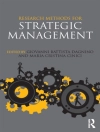Introducing Survival Analysis and Event History Analysis is an accessible, practical and comprehensive guide for researchers and students who want to understand the basics of survival and event history analysis and apply these methods without getting entangled in mathematical and theoretical technicalities. Inside, readers are offered a blueprint for their entire research project from data preparation to model selection and diagnostics.
Engaging, easy to read, functional and packed with enlightening examples, ′hands-on′ exercises and resources for both students and instructors, Introducing Survival Analysis and Event History Analysis allows researchers to quickly master these advanced statistical techniques. This book is written from the perspective of the ′user′, making it suitable as both a self-learning tool and graduate-level textbook.
Introducing Survival Analysis and Event History Analysis covers the most up-to-date innovations in the field, including advancements in the assessment of model fit, frailty and recurrent event models, discrete-time methods, competing and multistate models and sequence analysis. Practical instructions are also included, focusing on the statistical program R and Stata, enabling readers to replicate the examples described in the text.
This book comes with a glossary, a range of practical and user-friendly examples, cases and exercises.
Innehållsförteckning
The Fundamentals of Survival and Event History Analysis
Introduction: What Is Survival and Event History Analysis?
Key Concepts and Terminology
Censoring and Truncation
Mathematical Expression and Relation of Basic Statistical Functions
How Do the Survivor, Density and Hazard Function Relate?
Why Use Survival and Event History Analysis?
Overview of Survival and Event History Models
Exercises
Using R and Other Computer Programs for Survival and Event History Analysis
Introduction: Computer Programs for Survival and Event History Analysis
Conducting Serious Data Analysis: Life Lessons
Why Use R?
Downloading R on Your Personal Computer
Add-On Packages
Running R
Determining and Setting your Working Directory
Help and Documentation
Importing Data Into R
Working With Data: Opening and Accessing Variables from a Data Frame
Saving Output as File, Workspace and History and Quitting R
Exercises
Your First Session: Using the Survival Package and Exploring Data Via Descriptive Statistics and Graphs
Your First Session Using the ′Survival′ Package In F
Loading and Examining the Survival Package and Rcmdrplugin.Survival Plug-In
Opening and Examining Data
The Surv Object: Packaging the ′Survival Variable′
Basic Descriptive Statistics
Descriptive Data Exploration with Graphs
Exercises
Data and Data Reconstruction
Introduction: Why Discuss Data and Data Preparation?
Sources of Event History Data
Single-Episode Data for Single Transition Analyses
Multi-Episode Data for Recurrent Event and Frailty Analyses
Subject-(Person)-Period Data for Discrete-Time Hazard Models
The Counting Process and Episode Splitting
A Note on Dates
Exercises
Non-Parametric Methods: Estimating and Comparing Survival Curves Using the Kaplan-Meier Estimator
Introduction
The Kaplan-Meier Estimator
Producing Kaplan-Meier Estimates
Plotting the Kaplan-Meier Survival Curve
Testing Differences Between Two Groups Using Survdiff
Stratifying the Analysis by a Covariate
Exercises
The Cox Proportional-Hazards Regression
Introduction: Why is The Cox Model So Popular?
The Cox Regression Model
Estimating and Interpreting The Cox Model with Fixed Covariates
The Cox Regression Model with Time-Varying Covariates
Exercises
Parametric Models
Introduction: What are Parametric Models and Why Use Them?
Proportional Hazards (Ph) Versus Accelerated Failure Time (Aft) Models
The Path to Choosing a Model
Estimating and Interpreting Parametric Survival Models
Exponential and Piecewise Constant Exponential Model
Weibull Model
Log-Logistic and Log-Normal Models
Additional Parametric Models
Finding the Best Fitting Parametric Model
Exercises
Model Building and Diagnostics
Introduction
Model Building and Selection of Covariates
Assessing the Overall Goodness of Fit of Your Model
What is Residual Analysis?
Testing Overall Model Adequacy: Cox-Snell Residuals
Testing the Proportional Hazards Assumption: Schoenfeld Residuals
Checking For Influential Observations: Score Residuals (Dfbeta Statistics)
Assessing Nonlinearity: Martingale Residual and Component-Plus-Residual Plots
Exercises
Correlated and Discrete-Time Survival Data: Frailty, Recurrent Events and Discrete-Time Models
Introduction
Shared Frailty: Modeling Recurrent Events and Clustering In Groups
Other Frailty Models: Unshared, Nested, Joint and Additive Models
Estimating Frailty Models in R
Example of Frailty Model Estimation and Interpretation
Discrete-Time and Count Models
Exercises
Multiple Events and Entire Histories: Competing Risk, Multistate Models and Sequence Analysis
Introduction
Competing Risk Models
Multistate Models
Sequence Analysis: Modeling Entire Histories
Exercises
Appendix : Datasets Used in this Book












